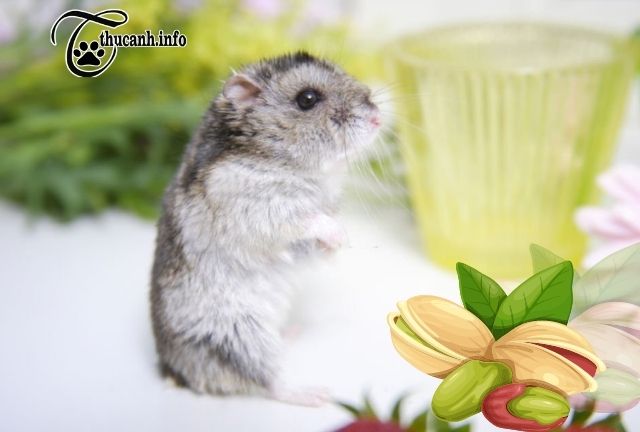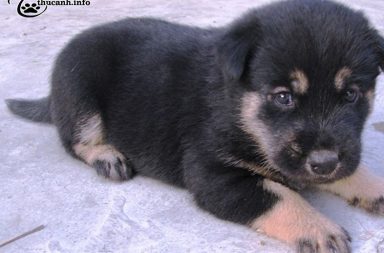Can Hamsters Eat Pistachios? Pistachios are tasty and healthful for people, but can your cute hamster enjoy them too? Whether you’re a hamster owner or just interested about the greatest food, we’ve got the answer! Discover hamster and pistachio secrets with us. Learn how to give your pet this tasty nut. Satisfy your curiosity and feed your hamster. Let’s go nuts!

Hamsters eat pistachios good or bad
1. Can Hamsters Eat Pistachios?
Hamsters may safely consume pistachios in moderation without the shells. They may choke on shells. Pistachios should be a pleasure, not a staple. Salted or flavoured pistachios can hurt hamsters. Introduce new meals gently and watch for allergic reactions in your hamster.
2. Hamster pistachio nutrition
100 grammes of pistachios’ nutritional breakdown and hamster advantages are shown below:
|
Nutritional Components |
Amount in 100g |
Benefits for Hamsters |
|
Calories |
562 kcal |
Provides energy for daily activities |
|
Carbohydrates |
27.17 g |
Essential source of energy and nutrients |
|
Sugars |
7.81 g |
Provides natural sweetness |
|
Dietary Fiber |
10.3 g |
Supports digestion and gastrointestinal health |
|
Fat |
45.97 g |
Rich source of fats, including monounsaturated and polyunsaturated fats |
|
Saturated Fat |
5.6 g |
Provides essential fatty acids for overall health |
|
Monounsaturated Fat |
24.09 g |
Supports heart health and immune function |
|
Polyunsaturated Fat |
13.72 g |
Contains omega-6 fatty acids for brain and nerve health |
|
Protein |
20.27 g |
Supports growth and muscle maintenance |
|
Vitamin B6 |
1.274 mg |
Aids in metabolism and nervous system function |
|
Thiamin (Vitamin B1) |
0.765 mg |
Supports energy production and nerve health |
|
Phosphorus |
490 mg |
Supports bone and teeth development |
|
Potassium |
1025 mg |
Regulates heart function and fluid balance |
|
Magnesium |
120 mg |
Supports muscle and nervous system health |
|
Copper |
1.3 mg |
Aids in iron absorption and immune function |
|
Manganese |
1.275 mg |
Essential for bone health and metabolism |
|
Zinc |
2.2 mg |
Supports various metabolic processes |
|
Iron |
3.92 mg |
Assists in oxygen transport in the blood |
3. Are pistachios dangerous for hamsters?
Feeding hamsters pistachios is risky. Pistachios are nutritious but can hurt hamsters. Pistachios can harm hamsters:
- Pistachios are strong in monounsaturated and polyunsaturated fats. Fat is difficult for hamsters to digest. Overeating fat can cause obesity and other health problems.
- Choking Hazard: Whole or big pistachios can cause choking. To avoid choking, feed hamsters little chunks.
- Pistachio shells and salt can harm hamsters. Salted pistachos can also hurt hamsters.
- Pistachio allergies are possible in hamsters. Allergic responses can include itching, swelling, and breathing problems.
- Digestive Upset: Hamsters have delicate digestive systems, so new diets, especially high-fat ones, might cause digestive upset, diarrhoea, or other gastrointestinal disorders.
- Pistachios are nutritious, but they shouldn’t substitute a hamster’s balanced diet. Commercial hamster food or pellets give the proper protein, fibre, vitamins, and minerals for hamsters.
Given these concerns, pistachios should only be eaten occasionally in tiny amounts. To reduce risks, remove the shells, avoid salted pistachios, and give your hamster little bits.

The amount of pistachios that hamster should eat
4. Can hamsters consume numerous pistachios at once?
Hamsters have delicate stomachs and should eat high-quality hamster food or pellets. To avoid health risks, pistachios should be served sometimes in small amounts.
Hamsters can eat one or two tiny pistachios at a time. Remove the shell and avoid salty kinds, which can hurt hamsters. Always observe your hamster’s behavior to pistachios and other goodies.
5. How to feed hamsters pistachios.
These guidelines should be followed while feeding pistachios to hamsters:
- Wait 4–6 months: Hamsters’ growing digestive systems are fragile. Introducing pistachios when they’re older is better.
- Start small: To test your hamster’s reaction, offer a little pistachio approximately the size of a fingernail.
- Before feeding your hamster a pistachio, remove the hard shell. Ingesting the shell might induce choking or intestinal issues.
- Choose unsalted pistachios. Hamsters’ tiny size and sensitivity to salt make salted variants dangerous.
- After introducing pistachios, watch for allergic responses. Itching, edoema, and breathing difficulties may occur. Stop feeding pistachios if difficulties arise.
- In moderation: Hamsters should only consume pistachios occasionally. Pistachios and other delicacies can cause weight and digestive troubles.
- Balance the diet: Feed your hamster a balanced commercial hamster chow or pellets that provides all the nutrients they require.
- Variety of treats: In addition to pistachios, provide fresh fruit and vegetable pieces. This gives them variety and nourishment.
- Check weight: Weight your hamster. Adjust treats if weight changes significantly.
- Consult a small animal veterinarian if you have any worries about adding additional goodies to your hamster’s diet. They can tailor a balanced meal for your hamster.
Following these rules, you may safely give your hamster pistachios as an occasional treat and a balanced diet.
6. Hamster pistachio allergy symptoms
Although rare, hamsters can have pistachio allergies. Signs of moderate to severe allergic responses include:
- Skin Irritation: Hamsters allergic to pistachios may experience skin irritation or redness, especially around the mouth or paws, if they touch the nuts or shells.
- Allergic hamsters may scratch more than normal. To relieve pain, they may massage their face or body.
- Allergic reactions can include facial, tongue, and paw swelling.
- Allergies can cause hamsters to wheeze or have trouble breathing.
- Pistachio allergies can cause diarrhea, bloating, and vomiting.
- Lethargy: When sick, allergic hamsters may appear sluggish.
7. Pistachio-free hamster treats
Hamsters may eat other healthful food besides pistachios. Hamster snacks must be suited for their small size and fragile digestive systems. Healthy alternatives:
- Plain Unsalted Nuts: Almonds, walnuts, and hazelnuts are good treats in little amounts. Remove shells and serve tiny pieces.
- Sunflowers, pumpkins, and flaxseeds: Due to their fat content, they are treated only in modest amounts.
- Fresh Fruits: Apples, bananas, berries (blueberries, raspberries, strawberries), and melon make tasty, healthful snacks.
- Vegetable: Hamsters can eat carrots, cucumbers, bell peppers, and broccoli in modest amounts.
- Whole Grains: Serve cooked and cooled oats, quinoa, or brown rice in moderation.
- Herbs: Hamsters prefer parsley, cilantro, and basil.
- Dried Fruits: Dried apricots, raisins, and cranberries can be given in little amounts, although they are heavy in sugar.
- Hamster snacks: Commercially available hamster treats are developed for their nutrition. Avoid sugary and artificial snacks.

Questions about hamsters and pistachios
8. FAQs
- Can hamsters eat shelled raw pistachios?
Hamsters should not consume shelled raw pistachios. Hamsters cannot digest pistachio shells. Pistachios with shells can cause choking, gastric difficulties, and damage in hamsters.
- Are there pistachio-avoidant hamster breeds?
Hamsters have comparable diets and digestive processes. Thus, all hamsters should be given pistachios.
- Pistachios for infant hamsters?
No pistachios or other solid snacks for infant hamsters. Hamster pups have fragile digestive systems. If orphaned, they should be fed mother’s milk or a specially prepared milk replacement.
- Pistachios for dwarf hamsters?
Dwarf hamsters can occasionally consume pistachios. Pistachios are heavy in fat, and hamsters have delicate digestive systems.
In conclusion, hamsters should only be given pistachios in moderation. Prioritize their health because these tiny furballs have special nutritional needs and fragile digestive systems. Hoping “Can Hamsters Eat Pistachios” article of Thucanh.infor should help.


